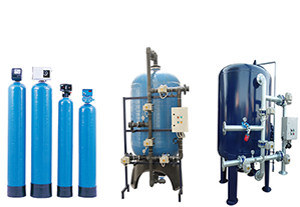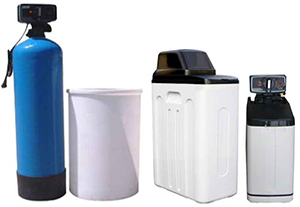DRINKING AND DOMESTIC WATER TREATMENT SYSTEMS
Generally, purified water of desired quality is obtained with treatment facilities designed according to the characteristics of the water source (stream, lake, river, dam, etc.) in order to provide drinking and utility water in medium and large-scale residential areas. Since the raw water quality, amount of water, distance to the source and seasonal changes are taken into consideration in the project design of the facility, the process steps to be applied may differ.
Facility depending on the water quality; It consists of process units such as pre-chlorination, oxidation, physical treatment, chemical treatment, filtration, sedimentation, disinfection and sludge treatment. Gravity flow or intermediate pump stations can be used to ensure hydraulic flow according to the slope of the land in the area where the facility will be established.
Compared to other treatment processes, it provides drinking and utility water and the necessity to operate 24/7, by establishing the correct design and automation system, and operation and maintenance ease of use is provided. Thanks to laboratory-supported measurements, the facility can always be operated under optimum conditions depending on the raw water quality.
SAND FILTER SYSTEMS
Sand Filter Systems; It is used to remove residues, particles and solids in acid in water. It is used as pre-treatment.
CARBON FILTER SYSTEMS
Carbon Filter Systems; It is used for purification of unwanted chlorine, color, taste, odor, insoluble organic and inorganic substances in water.
SOFTENING SYSTEMS
Softening Systems; It is used to remove Calcium (Ca) and Magnesium (Mg) ions that cause hardness in water. There are two types of softening systems, Single and Tandem (Double). Resin is used in softening systems. When the resin is saturated, it is regenerated with salt water and purified from Calcium (Ca) and Magnesium (Mg) ions. Regeneration processes run automatically, periodically, on the desired day, at the desired time.
REVERSE OSMOSIS SYSTEMS
Reverse Osmosis; It is used to separate microparticles and heavy metals in water with the help of a semi-permeable membrane by applying pressure to water.
DOSING AND DISINFECTION SYSTEMS
Dosing Systems; These are systems that are implemented automatically with chemical products in order to oxidize oxidizable substances such as iron, nitrite, sulfur and manganese in water and to disinfect microorganisms such as bacteria and viruses. The most widely used disinfection chemical is chlorine. Ultraviolet (UV) disinfection systems; These are the systems used to prevent microorganism and bacteriological activities in the water. UV systems consist of stainless steel reactor, quartz cover, UV lamp and control panel. UV systems have 99.9% disinfection effect.






